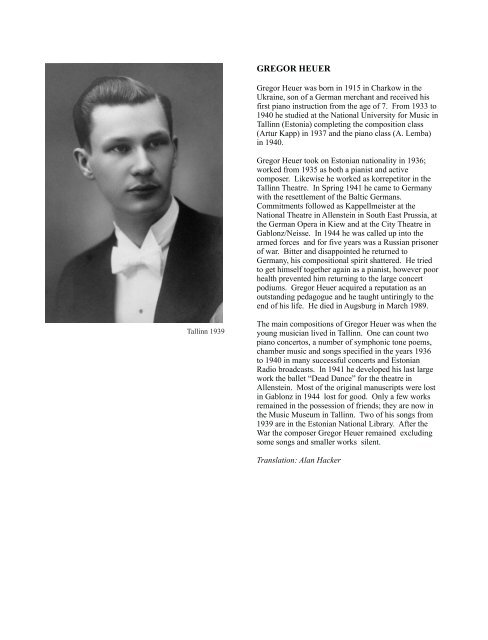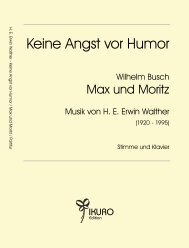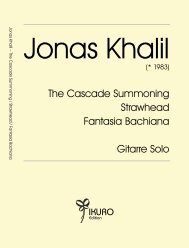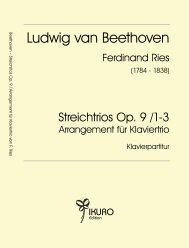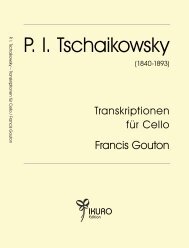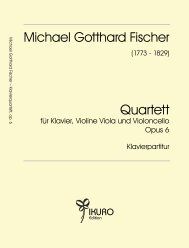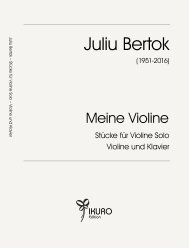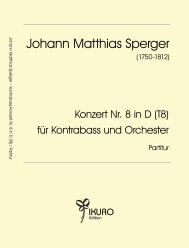Sie wollen auch ein ePaper? Erhöhen Sie die Reichweite Ihrer Titel.
YUMPU macht aus Druck-PDFs automatisch weboptimierte ePaper, die Google liebt.
GREGOR HEUER<br />
Gregor Heuer was born in 1915 in Charkow in the<br />
Ukraine, son of a German merchant and received his<br />
first piano instruction from the age of 7. From 1933 to<br />
1940 he studied at the National University for Music in<br />
Tallinn (Estonia) completing the composition class<br />
(Artur Kapp) in 1937 and the piano class (A. Lemba)<br />
in 1940.<br />
Gregor Heuer took on Estonian nationality in 1936;<br />
worked from 1935 as both a pianist and active<br />
composer. Likewise he worked as korrepetitor in the<br />
Tallinn Theatre. In Spring 1941 he came to Germany<br />
with the resettlement of the Baltic Germans.<br />
Commitments followed as Kappellmeister at the<br />
National Theatre in Allenstein in South East Prussia, at<br />
the German Opera in Kiew and at the City Theatre in<br />
Gablonz/Neisse. In 1944 he was called up into the<br />
armed forces and for five years was a Russian prisoner<br />
of war. Bitter and disappointed he returned to<br />
Germany, his compositional spirit shattered. He tried<br />
to get himself together again as a pianist, however poor<br />
health prevented him returning to the large concert<br />
podiums. Gregor Heuer acquired a reputation as an<br />
outstanding pedagogue and he taught untiringly to the<br />
end of his life. He died in Augsburg in March 1989.<br />
Tallinn 1939<br />
The main compositions of Gregor Heuer was when the<br />
young musician lived in Tallinn. One can count two<br />
piano concertos, a number of symphonic tone poems,<br />
chamber music and songs specified in the years 1936<br />
to 1940 in many successful concerts and Estonian<br />
Radio broadcasts. In 1941 he developed his last large<br />
work the ballet “Dead Dance” for the theatre in<br />
Allenstein. Most of the original manuscripts were lost<br />
in Gablonz in 1944 lost for good. Only a few works<br />
remained in the possession of friends; they are now in<br />
the Music Museum in Tallinn. Two of his songs from<br />
1939 are in the Estonian National Library. After the<br />
War the composer Gregor Heuer remained excluding<br />
some songs and smaller works silent.<br />
Translation: Alan Hacker


